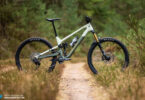Spotcheck | The 3-Länder Enduro Trails on the Reschen Pass

Last weekend’s 3-Länder Enduro Trails launch heralded the unveiling of twelve brand new enduro-specific trails around Reschensee. Spanning the three countries of Austria, Italy and Switzerland, this venture caters for all abilities – from beginners and families and experienced enduro riders – offering buckets of fun and impressive views. Our long-term tester Pirmin headed to the Reschen Pass with girlfriend Sandra to take a closer look.
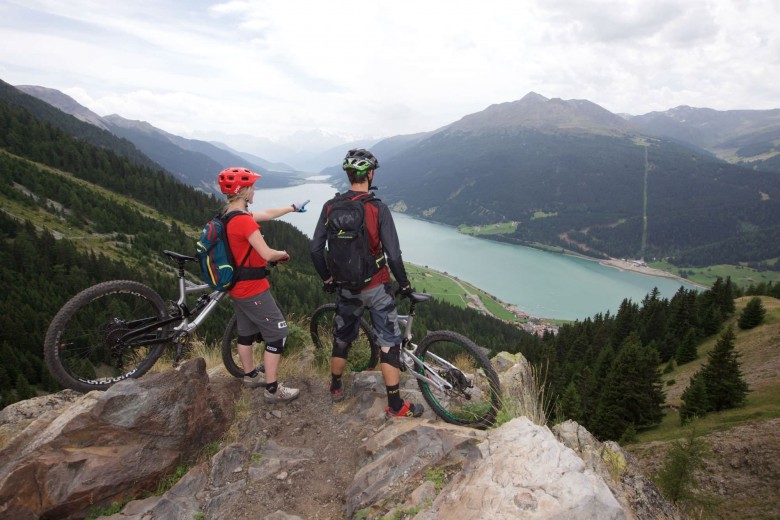
The Opening
With traditional South Tyrolean music cascading out of the Bergkastel mountain station and the opening ceremony taking place at the Plamort Plateau, the riding season officially kicked off at Reschensee last week as the region was taken over by riders. Accompanied by a real festival atmosphere, riders headed down on the Bunker trail towards the valley floor. The head of Alutech and cooperating partner, Jürgen Schlender and his team were present at the launch to offer extensive information on the latest bikes and the new trails.
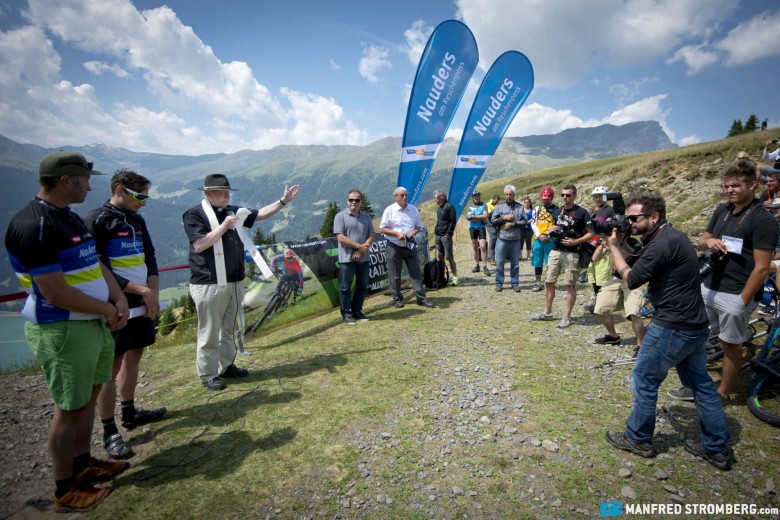
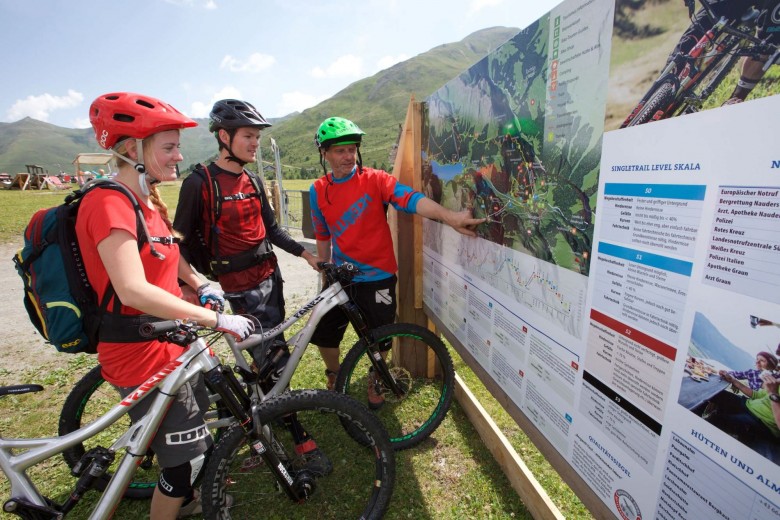
How to get there
The Dreiländereck – the tripoint of Austria, Switzerland and Italy – is about three hours’ drive from Munich, and the quickest route follows the A95 until the end of the motorway before heading towards Garmisch-Partenkirchen and the Fernpassstraße. Then take the A12 to Landeck, before turning onto the B180 until Nauders and Reschen. Alternatively, head to Reschen via Bozen/Meran.
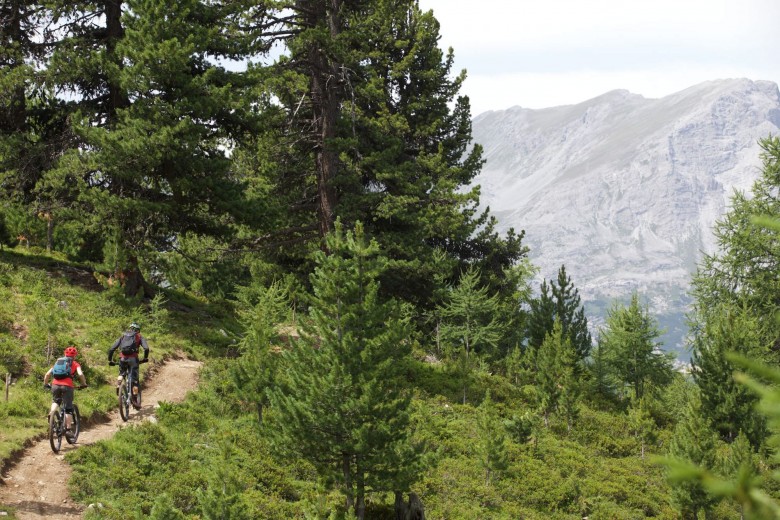
The region’s best trails
Predominantly natural, swooping singletracks, the region’s network of trails is effectively signposted and the trails can easily be linked to form larger rides. Each trailhead is marked by a miniature wooden statue of the famous submerged steeple in the lake, and clearly displays the trail’s name and difficulty rating. There are four cable cars incorporated into the network of trails, which ensures smooth transportation of your bike for the major climbs. On the Austrian side there’s the Mutzkopf and the Bergkastelbahn in Nauders, while Italy offers the Schönebenbahn in Reschen as well as the Haideralmbahn in St. Valentin.

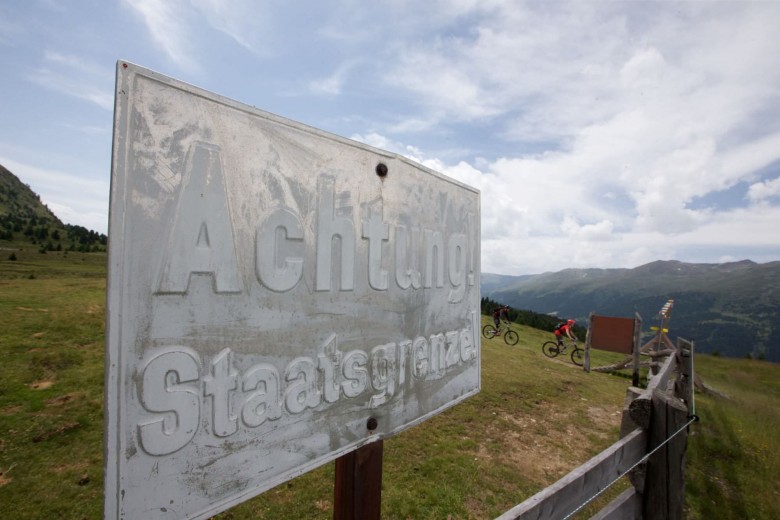
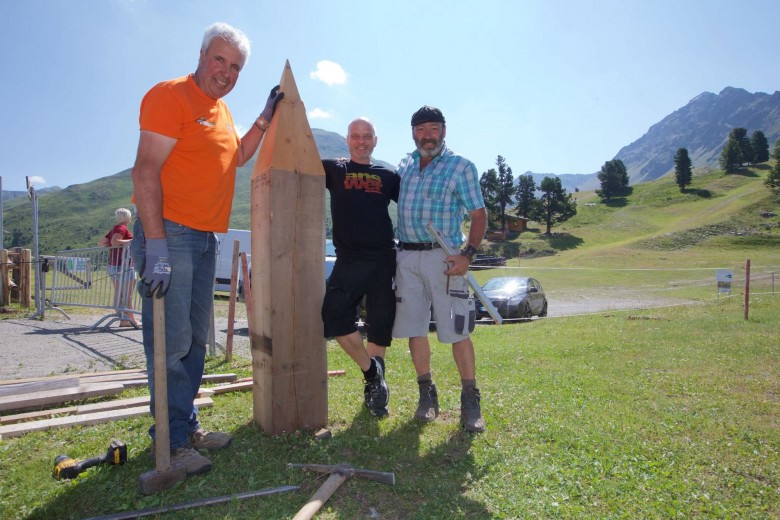
Our personal highlight in this region was definitely the 3-Länder-Trail. The Schöneben cable car climbs up to more than 2,100 metres of altitude directly from Reschensee Lake. From there, the flowing Obere Schönebentrail [upper] leads you down 300 metres in altitude through well-lit spruce forests before reaching a ski piste. Here you have the choice of taking the Unteren Schönebentrail [lower] down to the valley station, or opting for a fairly steep transfer stretch in the direction of Reschner Alm. Get your strength back up with some Kaiserschmarrn pancakes or a classic South Tyrolean snack before dipping down the trailhead of the 3-Länder-Trail and passing the Italian and Austrian border as well as the Grünsee and the Schwarzsee lakes. This hugely varied trail traces the Austrian/Swiss border, criss-crossing it so often that it’s tricky to pinpoint which country you’re in. After a root section comes the second and gentler transfer towards Mutzkopf mountain station. There’s a choice of four different trails that all swoop down to the valley station in Nauders, so rest assured that you can try out each of these trails without having to exhaust yourself on the climbs.
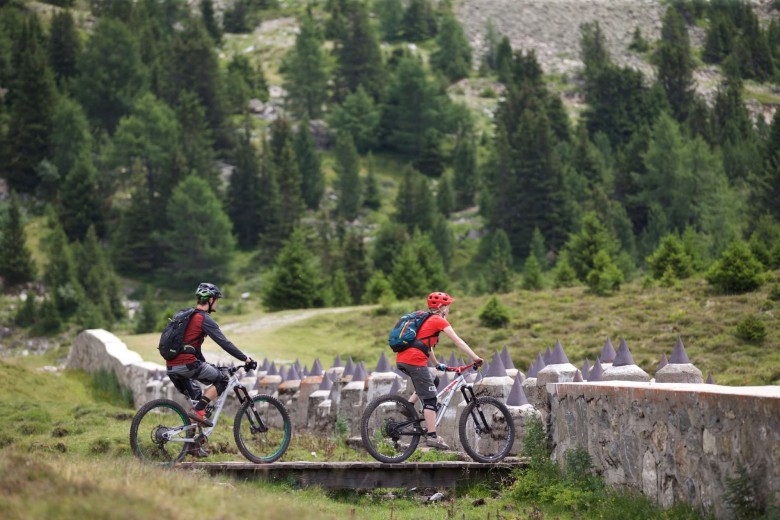

On the other side of the valley, the Bunker trail promises a fun ride as well. Casually head upwards with the Bergkastel cable car from Nauders, and after a short fire road descent, this flowing trail will take you to the renowned Plamort Plateau with its bunkers and tank traps on the border of Austria and Italy. For a decent photo opportunity, take a detour to the viewpoint before heading onto the pretty rocky trail. You’ll cross the fire road several times, constantly rewarded with spectacular views over Lake Reschen and its mountain backdrop. The Bunker trail culminates with a descent into the village of Reschen after you’ve enjoyed the final super flowing trail section in the forest above the village.
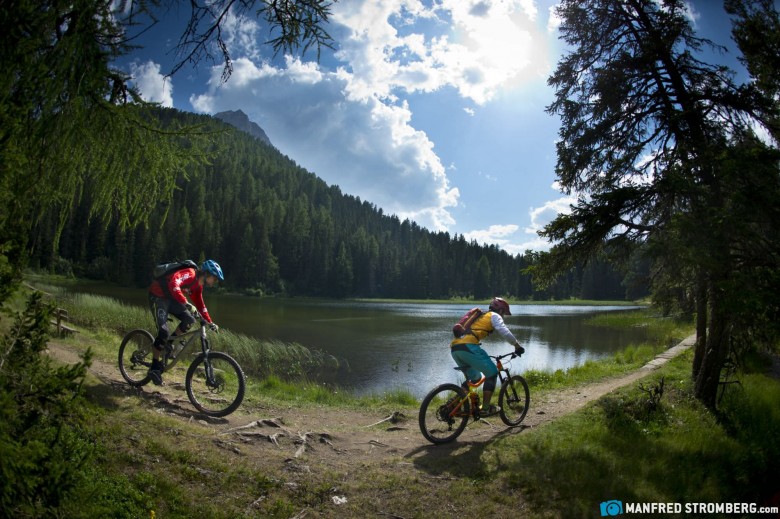
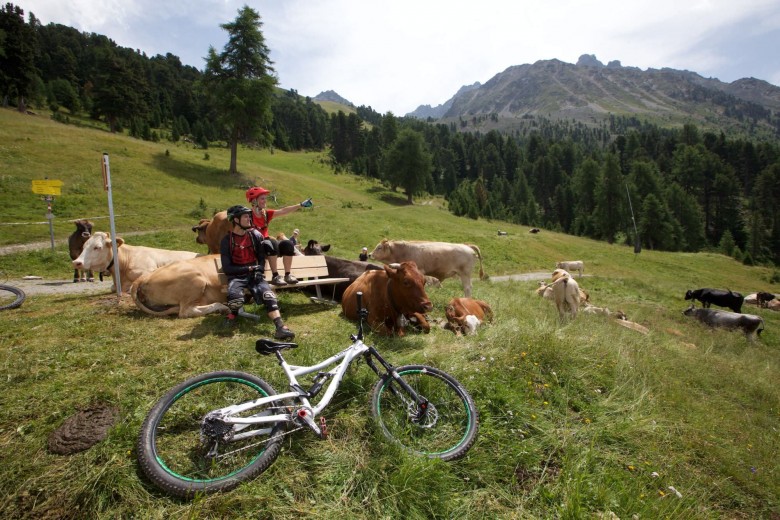
Where to stay
There are two small but stylish campsites in Nauders and St. Valentin. But if you’re after a touch more comfort, then there are lots of hotels in the area around the Reschensee which not only cater for your sleeping and eating needs, but also offer bike rooms and tools. The Neue Burg hotel in Nauders is one fine example of these bike-friendly hotels, where you can enjoy a sauna or a dip in the hotel’s own pool after a long day of riding.
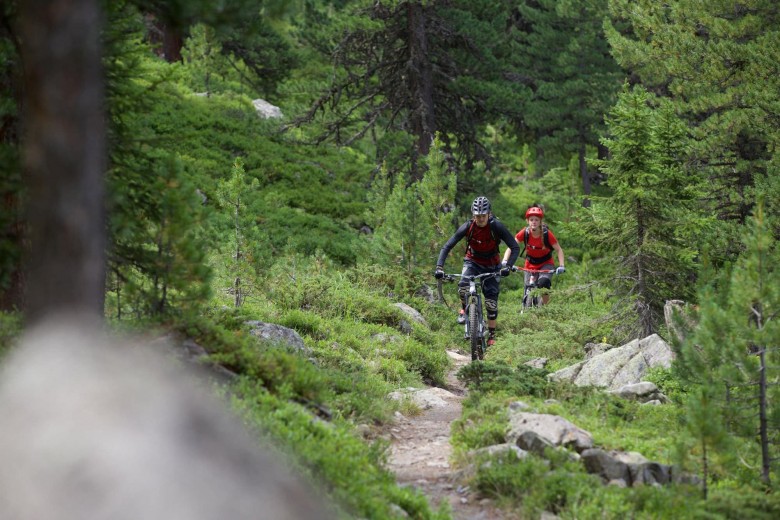
Reschenpass’s 3 must-dos
- Ride the 3-Länder Enduro Trail and puzzle over exactly which country you’re in at which moment
- Enjoy a tasty Kaiserschmarrn on the Reschner Alm
- Take a refreshing dip in the Reschensee after a heavy day’s riding.
- nauders.com/enduro
- reschenpass.it/enduro
More information
For more information on the region and to find a hotel, head to:
Text: Sandra Gatz | Bilder: Manfred Stromberg/Jörg Wohlfromm
Did you enjoy this article? If so, we would be stoked if you decide to support us with a monthly contribution. By becoming a supporter of ENDURO, you will help secure a sustainable future for high-quality mountain bike journalism. Click here to learn more.








